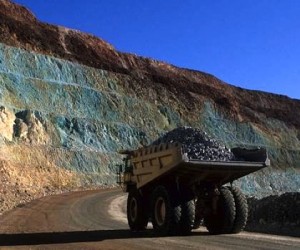A change in attitudes - from boardroom to pit - will be the only way for mines to escape low productivity levels and find a path back to long-term sustainability, according to SRK Consulting corporate consultant Roger Dixon.
"With productivity levels today 25-30% lower than they were a decade ago, it is not enough for mines to focus on isolated areas of operation for a magic bullet," said Dixon. "Neither will the gradual process of continuous improvement break us out of the current untenable situation."
Speaking at SRK's 3600 Mining Perspectives seminar in Johannesburg late last year, he said much of South Africa's mining sector was now bound by a shaft infrastructure that had long exceeded its planned life and was no longer efficient.
"Much of the gold industry, for instance, is still running on plus 60-year-old infrastructure that was only designed for a 40-year life-of-mine," he said. "There also has not been enough forward ore-reserve development, due to capital constraints - and this links directly to productivity."
Dixon also blamed the poor performance on the use of '1950s technology' like compressed air driven rock-drills; compressed air is one of the most inefficient power sources.
"Perhaps more importantly, however, it is our dated management model that holds back real productivity gains," he said. "The industry has been through many drastic changes in recent decades - from trade union recognition to violent strikes - but we have not formally reviewed management competencies to perform optimally in this new and challenging environment."
He highlighted the need for mining operations to engage constructively with a wider range of stakeholders, including employees and communities, to find ways of ensuring a wider spread of benefits for more people.
"The problem is that declining productivity has been proceeding alongside persistent inequality among South Africans, as well as a growing population," said Dixon. "This is a toxic mix that threatens not only the mining industry, but the legitimacy of capitalism as a whole."
An important way forward was through creating value by applying fast-developing technology across all elements of mining operations. Digital innovations allow mines to monitor and control various activities much more efficiently - and also more safely; remote control functions mean that fewer people are required to work in high-energy zones at the working face.
"Progress in mining will shift from how well the operation moves material to how well it collects, analyses and acts on information to move material more productively," he said.
The performance of the engineering disciplines in mines is being constantly enhanced by the computer capacity and related technology, he said. As an example - the integration of skills and experience along with sophisticated modelling of the ore body, structural geology, geohydrology, geotechnical engineering, and mine planning and scheduling, which is now able to significantly improve mine efficiencies and reduce risk.
He said drone technology was being employed to deliver high quality images of pre- and post-blast conditions in open pit mines, allowing better blast planning and modelling. The improved results achieved from these blasts directly benefited mines through factors like loading efficiency and lower power consumption in the crushers.
"The changes required to achieve the productivity we need are going to be difficult, but it can succeed if there is faith among the industry leadership that the end-result is worth it," said Dixon.
Visit SRK Consulting at Booth 909 at the Investing in African Mining Indaba 6-9 February 2017 Cape Town, South Africa.






